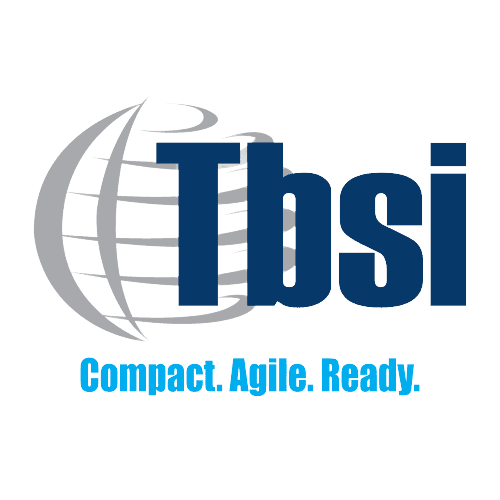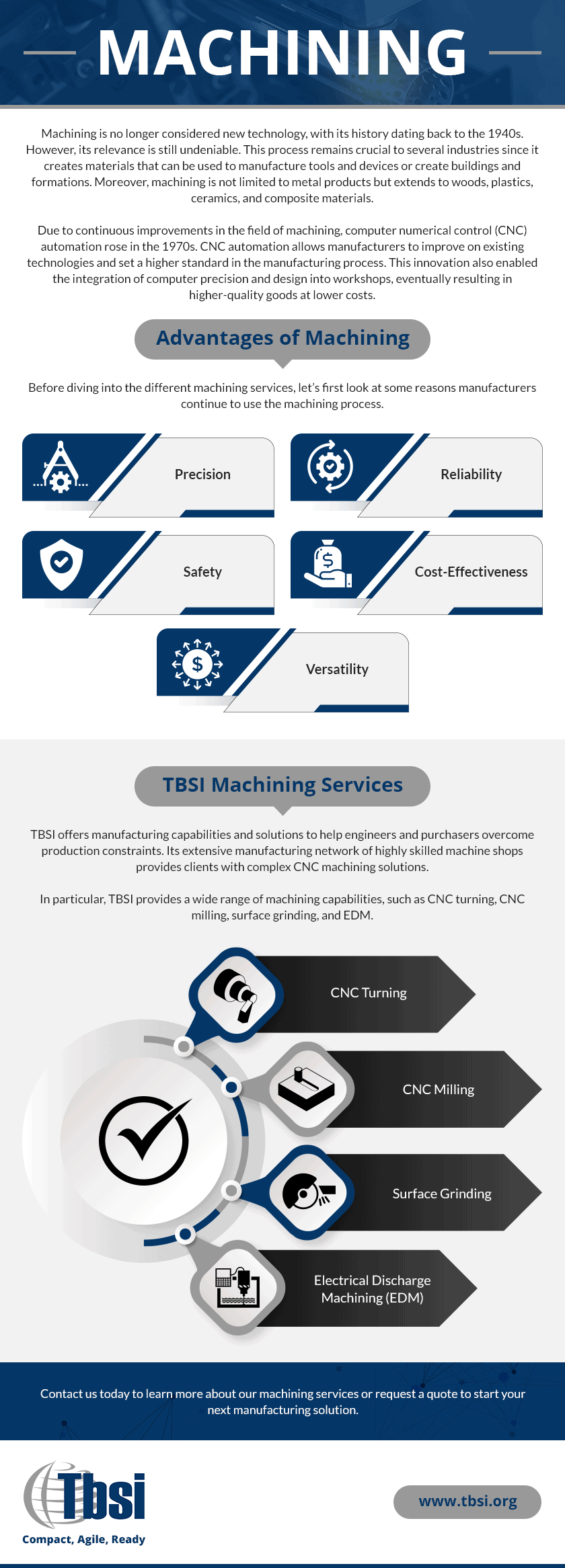Machining
Leave a CommentMachining is no longer considered new technology, with its history dating back to the 1940s. However, its relevance is still undeniable. This process remains crucial to several industries since it creates materials that can be used to manufacture tools and devices or create buildings and formations. Moreover, machining is not limited to metal products but extends to woods, plastics, ceramics, and composite materials.
Due to continuous improvements in the field of machining, computer numerical control (CNC) automation rose in the 1970s. CNC automation allows manufacturers to improve on existing technologies and set a higher standard in the manufacturing process. This innovation also enabled the integration of computer precision and design into workshops, eventually resulting in higher-quality goods at lower costs.
Advantages of Machining
Before diving into the different machining services, let’s first look at some reasons manufacturers continue to use the machining process.
Precision
CNC machining is often the best option when parts or products must be made to high-precision specifications. For example, precision machining is widely used in the aerospace and medical device industries, where fabrication errors must be avoided at all costs.
Reliability
Machined parts and products are highly reliable because human error and alteration are eliminated during production. This advantage is most relevant in the construction and automotive industries.
Safety
Machining automation is also a breakthrough in workplace safety since these processes are computer-controlled and do not require hands-on operation. As a result, accidents are less likely to occur. Not only does this protect the people involved, but it also decreases financial damages from accident liabilities.
Cost-Effectiveness
This automated technique allows manufacturers to speed up production while keeping overhead and labor costs affordable. Thus, CNC machining increases efficiency and lowers costs through automation, lesser waste, and improved production.
Versatility
Machining remains relevant as it can be used to produce various parts and products in diverse sizes and materials. In addition, it is a core process in manufacturing, so its importance spans several fields and industries.
TBSI Machining Services
TBSI offers manufacturing capabilities and solutions to help engineers and purchasers overcome production constraints. Its extensive manufacturing network of highly skilled machine shops provides clients with complex CNC machining solutions.
In particular, TBSI provides a wide range of machining capabilities, such as CNC turning, CNC milling, surface grinding, and EDM.
CNC Turning
CNC turning is most suitable for machining cylindrical parts. The workpieces are held in rotating chucks, moving at high speeds. Adjacent to the chucks, a tool follows a linear path to remove a portion of the workpiece. This process is also known as subtraction machining, as the process involves material removal.
Facilities that offer CNC turning typically have three, four, or five axes capable of working on various materials. These also follow pre-programmed instructions that control tooling and movement, producing a high-precision CNC machining process.
CNC Milling
CNC milling is a machining process that uses computer-based controls and rotating multi-point cutting tools to remove material from a workpiece. This process would then create a custom-designed component or product.
CNC milling is suitable for machining various materials, including metal, plastic, glass, and wood. Its versatility and precision make it an excellent option for adding extra features or more intricate definitions on machined products.
Surface Grinding
Surface grinding is a CNC machining technique that precisely and efficiently processes and grinds surfaces. A rotating wheel with a coarse surface coating of various materials propels it. It also removes metallic or nonmetallic particles from the workpiece’s surface, making it smooth or flat.
Additionally, surface grinding refines the appearance of the machined surface by removing the oxide layer and other residues. Vertical swivel, horizontal spindle single disk, vertical spindle rotary, vertical spindle, and flat spindle grinding are all surface grinding methods.
The surface grinder comprises an abrasive wheel, a chuck, and a reciprocating or rotary table. The chuck holds the material in place while it is being worked on. Non-ferromagnetic and nonmetallic elements are held in place by vacuum or mechanical means, whereas ferromagnetic elements are held in place by a magnetic chuck. If a magnetic chuck is not available, a machine vise (made of ferromagnetic steel or cast iron) can be used to hold nonmagnetic materials.
Electrical Discharge Machining (EDM)
The EDM process removes material from equipment or products using electrical energy. However, it only works with electrically conductive materials, which creates an arc of high-frequency sparks between the electrode and the product. Sparks then erode microscopic particles from a workpiece flushed with dielectric fluid from the substrate.
The primary advantage of EDM is that you can use it on conductive materials that are difficult to machine using traditional cutting methods. These materials include tungsten carbide and titanium. Another advantage of this CNC machining process is that the equipment is not subjected to mechanical force. The three types of EDM are wire, ram, and hole drilling.
Start Your Next Project With TBSI For The Best Machining Solutions
Successful projects require hard work, organization, and good partners. As a strategic sourcing firm specializing in agile project management, we at TBSI provide customers with competitive rates and short lead times by collaborating with an extensive manufacturing network and leveraging volume pricing on raw materials.
Contact us today to learn more about our machining services or request a quote to start your next manufacturing solution.

